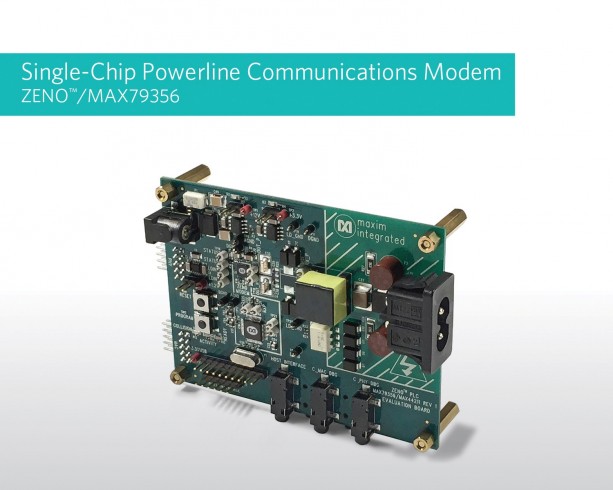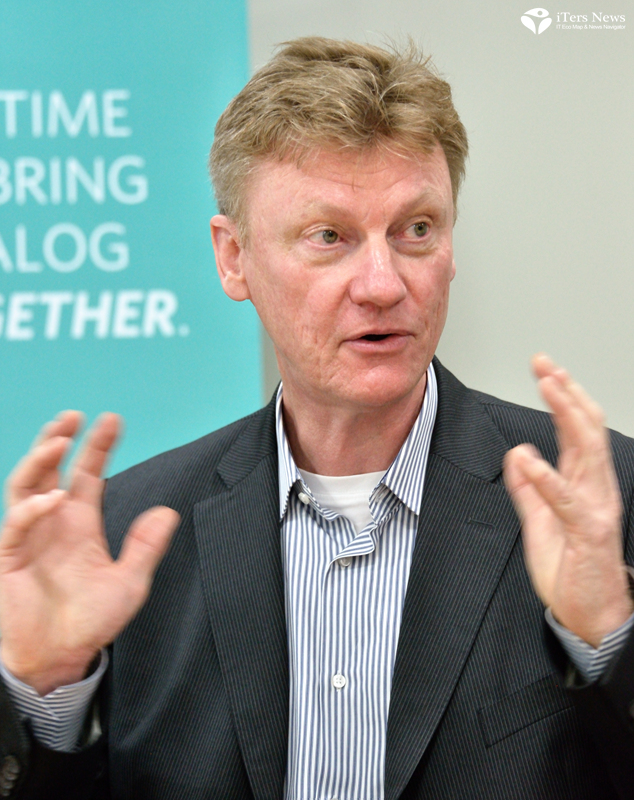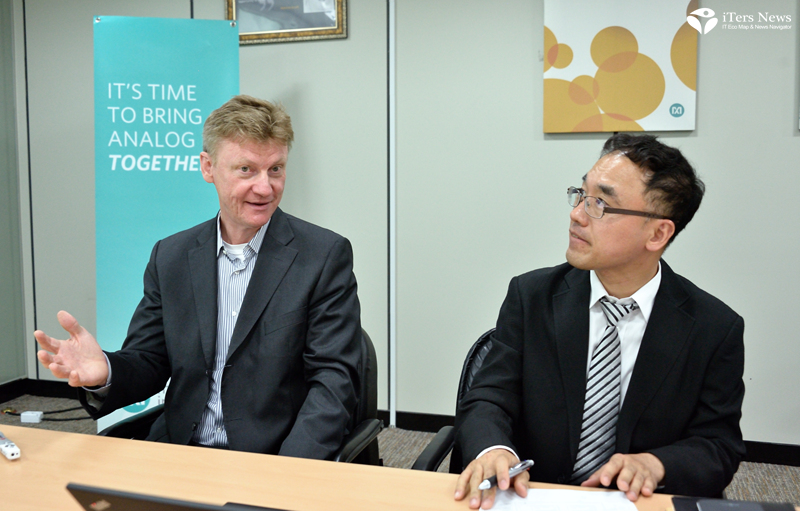Unlike traditional power grids, the smart grid system is intelligent enough to allow utility service operators to monitor electricity consumption in real time, enforce variable tariff schedules and billing schemes, and better manage peak loads.
At the center of the intelligent system is a built -in two-way power line communication, or PLC system that keeps the power grid staying connected to the Internet around clock to gather, analyze, and process data on the status quo of the power grid.
Yet, that's where tones of noise signals are swarming their way into the system making the PLC system very vulnerable to signal interference. Security is a hot issue, too as the network stretches so long and wide hat ill-spirited hackers can easily infiltrate into the system to black out or paralyze the system. Incompatibility between various standards for PLC technology platform is also the fast and wide implementation of smart grid system.
That's where the forte of Maxim Integrated Products' ZENO MAX79365 PLC modem SoC, or system on chip comes in.
The ZENO MAX79356 is a programmable narrowband orthogonal frequency division multiplexing (OFDM)-based powerline communication (PLC) modem SoC that integrates two pipelined 32-bit RISC (MAXQ 30E) processors to offer high performance and future-proof flexibility. It comes built with factory or in-filed firmware update feature to allow system developers to accommodate changes in standard and communications protocol. This programmability and software-configurability allow it to compatible with any PLC standards.
The built-in two 32-bit RISC processors perform dedicated PHY signal processing functions and MAC layer functionality. Factory or infield firmware update feature allows adoption of changes and updates in PLC communication standards. The integrated high-speed AES-CCM engine ensures standards-compliant data communication security and integrity.
As a result, designers of electrical utility meters now have the flexibility to accommodate the G3-PLC, Prime, and P1901.2 standards in the CENELEC A, ARIB, and FCC frequency bands with ZENO MAX79356 SoC .

True enough, PLC standards and frequency bands vary by region and country, and until now PLC modems could not support them all. Meter manufacturers had to develop multiple modems to ensure standards compatibility, or even pass up markets because they did not have the time or resources to develop new modems. That dilemma is now solved. The ZENO/MAX79356 PLC modem SoC is software configurable to accommodate all worldwide standards. Now, manufacturers and utilities can use the same device to build meters and data concentrators for any region that wants to use powerline communications. This allows meter designers to bring their products to market faster and be prepared for future standards. In addition, the integration of the analog front-end, or AFE and baseband in a single chip reduces chip count and lowers expenses.
"Fast, reliable, and secure communications networks are so critical in the Energy Internet of Things. If you look at the power grid as it looks today, it is very noisy and insecure environment. This is what we are faced with as implementers. The goal here is to make it robust and secure. So, implementers are faced with challenges of meeting both of current and future requirements, while ensuring interoperability and also make sure there is evolution forward into the future. In doing that, they have to make sure that they have right technologies and go through these different things we have talked about. Some of the critical points that are important in choosing technology is costs. we all know and especially utility companies want to implement best possible technologies, but it has to come at the reasonable cost. What I am talking about costs, it is not just cost of communications network, but an entire smart gird infrastructure, said Roger Westberg, smart grid segment manager, industrial and medical solution group with Maxim at a press conference held in Seoul
"Of course, real-time communications require that it can go a very long distance because we all know customers are spread out in many different areas like rural areas. For example, houses are very far from utilities and they have yet to be connected. Environments where there might be solar panels, which generate a lot of noises through the inverters, that type of environment requires robustness. And, there are two way links by which utilities and customers talk to each other for providing on-demand control information back and force," added he.
"The most important factor in choosing a technology platform is a security, an ability to protect assets. You have to make sure hackers or bad people do not hack into the network. That 's the downside of having the communication network. Once the PLC established, hackers have to ability of moving into the network to hack or destroy the infrastructure. Ensuring the strong security mechanism is one of the most important factors, but without interoperability, nothing will work anyway, " he continued.
Sure enough, having interoperability is to have different manufacturers different meters, different chip makers, different technology providers all talk to each other. It is critical. Open standards can ensure the interoperability. In order to meet future requirements, the power grid system als has to have scalability and ungradeability, so that in case of change in standards and governmental restrictions or regulations , there need to be a way to upgrade the network. Without strong industry support from the market, it wont' be successful, either.
Now, G3-PLC Alliance have over 60 members. This is a mixture of all different companies and utilities worldwide. G3-PLC was defined by utilities and developed for utilities. It all started with ERDF, which is the biggest and only electricity distribution operator in France. With 35 million customers, the company was looking for a technology which can offer balance of high data rate, robustness, quality of services, and reasonable costs. In order to meet this objective, they teamed up with Maxim Integrated. This is how Maxim started developments of the whole G3-PLC standard. The chip maker developed the specs and the first one was completed in 2009. Since then, it became a standard in December 2013 , an ITU standard called as G19903. At issue was how to match this G3-PLC features standard with requirements of utilities companies.

As G3-PLC has two layers of error-correction, it can meet the requirements for robustness. It also guarantees security between meters and power grids, as it features 128-bit PSK authentication and ciphering CCM at MAC layer. It also is future-proof standard, as it can work with a next generation of IPv6 to accommodate future applications on the IPv 6 network. As it is an open standard, it can ensure interoperability allowing different utility operators and systems to work together with each other. It is cost-effective to implement and maintenance, too, as it is easy and simple to implement, sporting plug-and-play features. Moreover, it comes with no repeaters. while featuring lower frequency band (150-500KHz and so ensuring higher data rate. it It is scalable, as it is a mesh network that can reconstruct itself when a link is broken without impacting a whole cluster. For example, its ability to support 2,000 nodes is an example of how it address a scalability.
"Utilities were looking for higher integration, smaller solution, lower power and lower costs. That's why we developed ZENO MAX79356 SoC This is by far the smallest, most reliable and most programmable solution in the market, today. It works in very different environments and standards. It is multi-band and multi-standard solutions for many different frequency bands, " Roger Westberg
The chip comes integrated with digital baseband, PLC front-end, DSP accelerators, and all the memory required to meet different standards. What really makes it stand out from other chip solutions is the small package size which is small enough to befit 48 pin LQFP, which translates into lower costs. And it also consumes 80% less power with active transmission power consumption of 70mW , meeting meter manufacturers or utility operators' requirement for as lowest power consumption as possible. Optimal networking efficiency through smart routing is another advantage eliminating unnecessary broadcast. It comes also built with separate RISC processor for DSP-intensive PHY and micro-intensive MAC, while its built-in DSP accelerator optimizing performances. It has also 500 kilo bytes on-chip memory for two stack images ; one for executing and the other for updating, steering clear of a need for external memory and thus reducing BOM, or bill of materials costs.
Security issues are well-addressed too, as it has a built-in cryptographic module that ensure secure communications, not only meeting G3-PLC security standards like 128-bit AES, but also providing more security features for the future to stop hacking threats.




